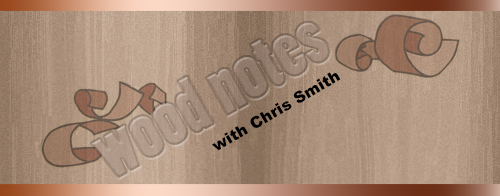
Here is a look at the most common finishes used before you "finish" your project. Hope you enjoy!
Wax
A very soft "finish", which offers very little protection. It is best used as a polishing and preserving agent on top of other finishes or as a finish to preserve the natural color of the wood.
Linseed Oil
A natural oil finish made from the seeds of the flax plant (the same plant that is used to produce flaxseed oil, which is found in health food stores & used to help prevent heart disease and arthritis. However, linseed oil is NOT edible as it contains other chemicals to aid in the drying process). It is one of the least protective finishes, but it is easy to apply and yields a beautiful hand-rubbed look. Like all oil finishes, it's best for items that won’t see a lot of wear and tear.
Tung Oil
A very old, natural finish made from nuts of the Tung tree, which grows in the eastern Asia. Slightly more water resistant and paler in color than linseed oil. Often used as the base oil component in other finishes. Also a good choice if the hand-rubbed look is what you're after.
Oil-Varnish Blend
A very popular "hybrid" finish made by mixing a little varnish with a larger quantity of oil. It is easy to apply like true oil finishes but with some of the protective qualities of varnish. Some types include antique oil, teak oil, Watco Danish oil, various salad bowl finishes and some home-made versions.
Shellac
One of the oldest and most under-appreciated of all finishes. Shellac is a resin secreted by the female lac bug on trees in the forests of India and Thailand. It is processed and is available in a variety of colors ranging from nearly transparent to orange/amber and is available in flakes or pre-mixed. It dissolves in alcohol or Behkol and is similar in scratch-resistance as oil or oil/varnish-blends but not as protective as varnish or water-based finishes. It's easily repaired and not as toxic as oil-based finishes. Interesting fact about shellac is that it is also used as a food and candy glaze and was used in making old phonograph records.
Lacquer
A synthetic cellulose-based finish that is the finish of choice for many professionals. It dries fast, has decent protective qualities (somewhere between oil-varnish blends and varnish), provides excellent clarity and depth, rubs out well, and is fairly easy to repair (we offer a variety of colors in aerosol toners for easy touch-up). It also sprays like a dream with the proper equipment. It's available in several varieties including nitrocellulose, CAB-acrylic, catalyzed (pre-cat & post cat), & water-borne. Pre-cat & post-cat simply means the hardener is either mixed in before, or after you get it. The most popular type used is the pre-cat. It can also be tinted slightly using toners or dyes for a deeper appearance.
Varnish
A very protective and durable, amber-colored finish that holds up well to wear and tear, water, and solvents. It's commonly available in one of three ways, depending on the resin used; alkyd, phenolic, or polyurethane. Negatives include a longer curing time, strong fumes while curing, and poor reparability. It also yellows more over time so it's not the best choice for light-colored woods.
Water-Borne
A good choice if you're looking for a non-yellowing finish that's safer for you and the environment. It has decent toughness and scratch resistance but not as resistant to water, heat, and solvents as standard varnish. The first coat has a tendency to raise the grain of the wood, which can be frustrating, especially if you are staining. Water-based finishes typically cost more than their oil-based counterparts. Due to new Volatile Organic Compounds laws (known as VOC), more and more finishes are now being made with a water base to them.
Conversion
A fast curing finish with excellent resistance to heat, wear, water, and solvents. Typically used for institutional furniture. Highly toxic solvent and formaldehyde fumes - a professional grade spraying environment is essential.
For a more in-depth look at finishing, check out the following books and videos: New Wood Finishing Book, Understanding Wood Finishing, & Refinishing Furniture DVD. For a complete listing of all of the finishing products we have available and get that project "finished."
About Chris Smith
Chris began his woodworking career early while in high school. With three years of woodshop class under his belt, he graduated in 1993 and then began work for a cabinet shop.
His work in the cabinet shop spanned over several years. He continued his skills in cabinetry on his own before joining Klingspor’s Woodworking Shop in 2001.
He found an immediate interest in woodturning while at Klingspor. But, for Chris, it is more than just woodturning as he finds enjoyment in all aspects of woodworking. He has a wealth of 20 years experience in cabinetmaking, furniture building, woodturning, and more.


